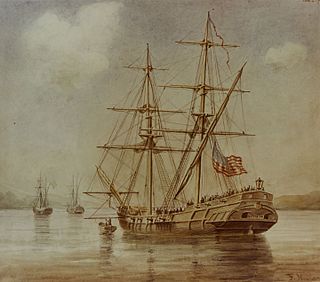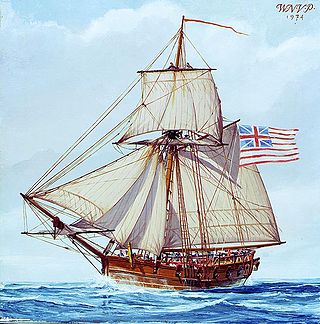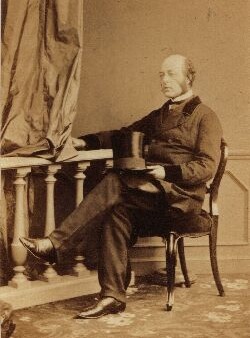
A brig is a type of sailing vessel defined by its rig: two masts which are both square-rigged. Brigs originated in the second half of the 18th century and were a common type of smaller merchant vessel or warship from then until the latter part of the 19th century. In commercial use, they were gradually replaced by fore-and-aft rigged vessels such as schooners, as owners sought to reduce crew costs by having rigs that could be handled by fewer men. In Royal Navy use, brigs were retained for training use when the battle fleets consisted almost entirely of iron-hulled steamships.

The first USS Lexington of the Thirteen Colonies was a brig purchased in 1776. The Lexington was an 86-foot two-mast wartime sailing ship for the fledgling Continental Navy of the Colonists during the American Revolutionary War (1775–1783).

The third USS Hornet was a brig-rigged sloop-of-war in the United States Navy. During the War of 1812, she was the first U.S. Navy ship to capture a British privateer.

USS Ranger was a sloop-of-war in the Continental Navy, serving from 1777–1780 and the first to bear her name. Built at Portsmouth Naval Shipyard on Badger's Island in Kittery, Maine, she is famed for the solo raiding campaign carried out by her first captain, John Paul Jones, during naval operations of the American Revolutionary War. In six months spent primarily in British waters, she captured five prizes, staged a single failed attack on the English mainland at Whitehaven, and caused Royal Navy ships to be dispatched against her in the Irish Sea.

USS Providence was a sloop-of-war in the Continental Navy, originally chartered by the Rhode Island General Assembly as Katy. The ship took part in a number of campaigns during the first half of the American Revolutionary War before being destroyed by her own crew in 1779 to prevent her falling into the hands of the British after the failed Penobscot Expedition.

USS Chew (DD-106) was a Wickes-class destroyer in the United States Navy during World War I and World War II.
John Foster Williams was an American mariner who served as an officer in the Massachusetts State Navy during the American Revolutionary War and later an officer in the Revenue-Marine.

CSS Jamestown, originally a side-wheel, passenger steamer, was built at New York City in 1853, and seized at Richmond, Virginia in 1861 for the Virginia Navy during the early days of the American Civil War. She was commissioned by the Confederate States Navy (CSN) the following July, and renamed CSS Thomas Jefferson but was generally referred to as Jamestown, after Jamestown, Virginia.

The second USS Porpoise was a 224-ton Dolphin-class brigantine. Porpoise was later re-rigged as a brig. She was based on the same plans as Dolphin.
HMS Leda, launched in 1800, was the lead ship of a successful class of forty-seven British Royal Navy 38-gun sailing frigates. Leda's design was based on the French Hébé, which the British had captured in 1782. Leda was wrecked at the mouth of Milford Haven in 1808, Captain Honeyman was exonerated of all blame, as it was a pilot error.
At least three British ship's tender or privateer schooners bore the name Arbuthnot during the American Revolutionary War. They were probably named for Admiral Mariot Arbuthnot, who commanded the British Royal Navy's North American station at that time.

The Massachusetts Naval Militia, was a naval militia active during the American Revolutionary War. It was founded December 29, 1775, to defend the interests of Massachusetts during the war.
USS General Gates was a brigantine of the Continental Navy active in 1778 and 1779.

Juan Bautista Azopardo was a Maltese privateer and military man who fought under the flags of the Netherlands, Spain, and Argentina.

Admiral Sir Arthur Cumming was an officer of the Royal Navy.

Tyrannicide was a 14-gun brigantine-rigged sloop of the Massachusetts State Navy. The ship was built for the American Revolutionary War and participated in commerce raiding until destroyed in the Penobscot expedition.

Aquiles was a brigantine, originally Spanish, that later served in the Chilean Navy. Sunk off Valparaíso on 24 July 1839.

HMS Blonde was a 32-gun fifth-rate warship of the British Royal Navy captured from the French in 1760. The ship wrecked on Blonde Rock with American prisoners on board. An American privateer captain, Daniel Adams, rescued the American prisoners and let the British go free. The captain's decision created an international stir. Upon returning to Boston, the American privateer was banished for letting go the British crew and he and his family became Loyalist refugees in Nova Scotia.

Rifleman was a Cruizer-class brig-sloop launched in 1809 for the Royal Navy. She served in the North Sea, on the Halifax and Jamaica stations, and in the Mediterranean Sea. During her service she recaptured a Royal Navy vessel in Danish service, and two privateers. The Navy sold her in 1836 and she proceed to sail as a merchantman and whaler between 1837 and 1856.
HMS LST-402/LSE-53 was a United States Navy LST-1-class tank landing ship that was transferred to the Royal Navy during World War II. As with many of her class, the ship was never named. Instead, she was referred to by her hull designation.
This page is based on this
Wikipedia article Text is available under the
CC BY-SA 4.0 license; additional terms may apply.
Images, videos and audio are available under their respective licenses.














